
How to test a spark plug with a multimeter
Content
You've probably come across spark plugs almost every time you search for a problem with your car online.
Well, spark plugs play an integral role in the ignition system and can easily fail, especially if the original ones have been replaced.
Due to constant pollution and overheating, it fails and you experience difficulty starting the car, engine misfiring or poor fuel consumption of the car.
In this guide, you will learn the whole process of checking a spark plug with a multimeter.
Let's get started.
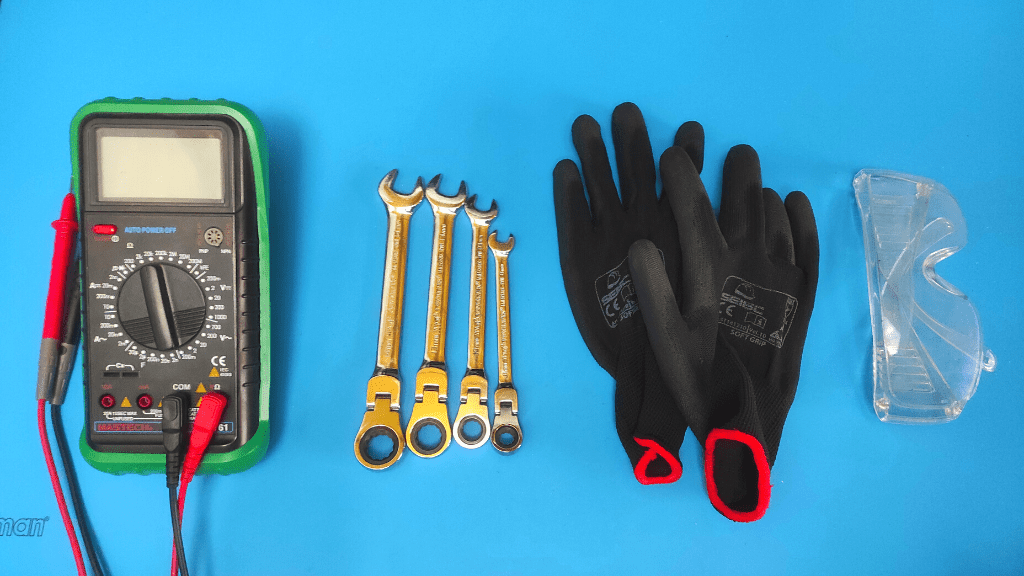
Tools needed to test the spark plug
To conduct a comprehensive diagnosis of the spark plug, it is necessary
- multimeter
- Wrench Set
- Insulated gloves
- Protective glasses
Once your tools have been compiled, you move on to the testing process.
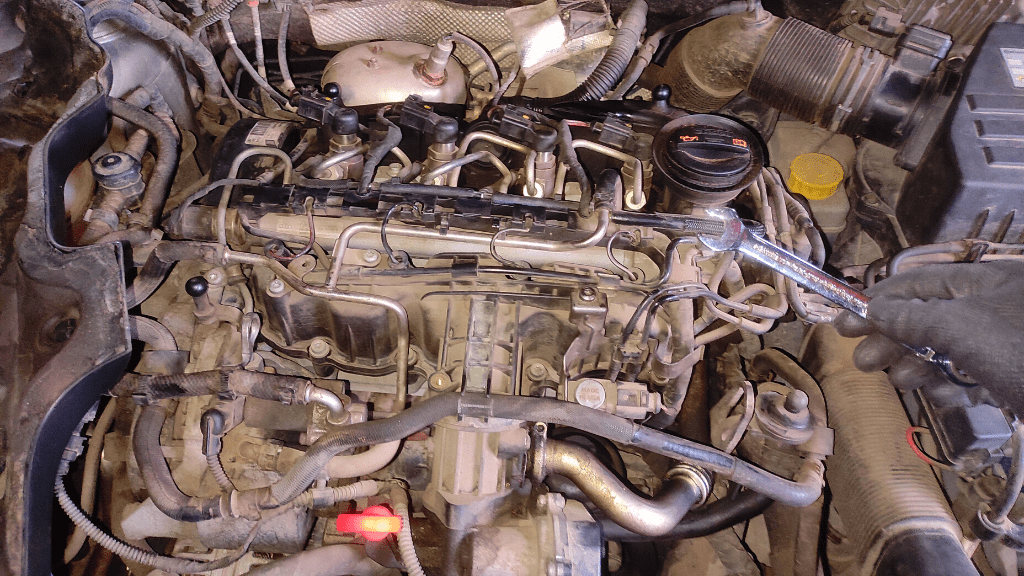
How to test a spark plug with a multimeter
With the spark plug out, set the multimeter to the 20K ohm range, place the multimeter's probe on the metal end that goes to the spark plug wire, and on the other end of the spark plug, place the other probe on the tiny stem coming from inside. A good plug has a resistance between 4,000 and 8,00 ohms.
In this testing process, there are other ways to check if the spark plug is working properly, and we will elaborate on them.
- Dry the fuel from the engine
The very first step you take is draining the fuel in your engine to rid all parts of it of flammable liquids.
This is because one of our tests requires you to test for an electrical spark from a plug, and you don't want anything to ignite.
Shut off the fuel supply to the engine by either removing the fuel pump fuse (in fuel injected systems) or by disconnecting the tube connecting the fuel tank to the fuel pump (as shown in carbureted engine systems).

Finally, you keep the engine running until the fuel burns out, and to prevent burns, wait for it to cool down before moving on to the next step.
- Remove the spark plug from the engine
The initial test we will explain requires you to completely disconnect the spark plug from your engine so that you have access to the parts being tested.
To do this, you usually need to unscrew the spark plug from the cylinder head, and then disconnect the ignition coil from it.
The method for detaching the coil depends on the type of coil system being used. In Coil-on-Plug (COP) ignition systems, the coil is mounted directly to the spark plug, so the bolt holding the coil in place must be loosened and removed.
For systems with coil packs, you simply pull out the wire connecting the plug to the block.
Once the coil has been disconnected, you unscrew the spark plug from the cylinder head with a wrench that matches its size.

- Set the multimeter to the 20 kΩ range
For the initial resistance test, you turn the dial of the multimeter to the "ohm" position, which is usually represented by the omega (Ω) symbol.
When doing this, you should also make sure that the dial is set to the 20 kΩ range. Given the expected resistance of the spark plug, this is the most appropriate setting for getting accurate results from the multimeter.
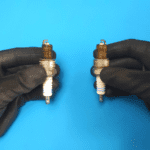
To check if the multimeter is set correctly, place both leads on top of each other and see if zero (0) appears on the multimeter display.
- Place the feeler gauges on the ends of the spark plug
Polarity does not matter when testing resistance.
Place one of the multimeter leads on the metal end where you disconnected the coil, which is usually the thinner part of the spark plug. The other probe should be placed on the copper core center electrode, which is the thin rod that comes out of the spark plug.

- Check the multimeter for readings
Now it's time to evaluate the results.
If the wires make proper contact with the two parts of the spark plug and the spark plug is in good condition, the multimeter is expected to give you a reading of 4 to 8 (4,000 ohms and 8,000 ohms).
However, that's not all.
The resistance range of 4,000 to 8,000 ohms is for spark plugs with an "R" in the model number, which indicates an internal resistor. Spark plugs without a resistor are expected to be between 1 and 2 (1,000 ohms and 2,000 ohms). Check your spark plug manual for correct specifications.
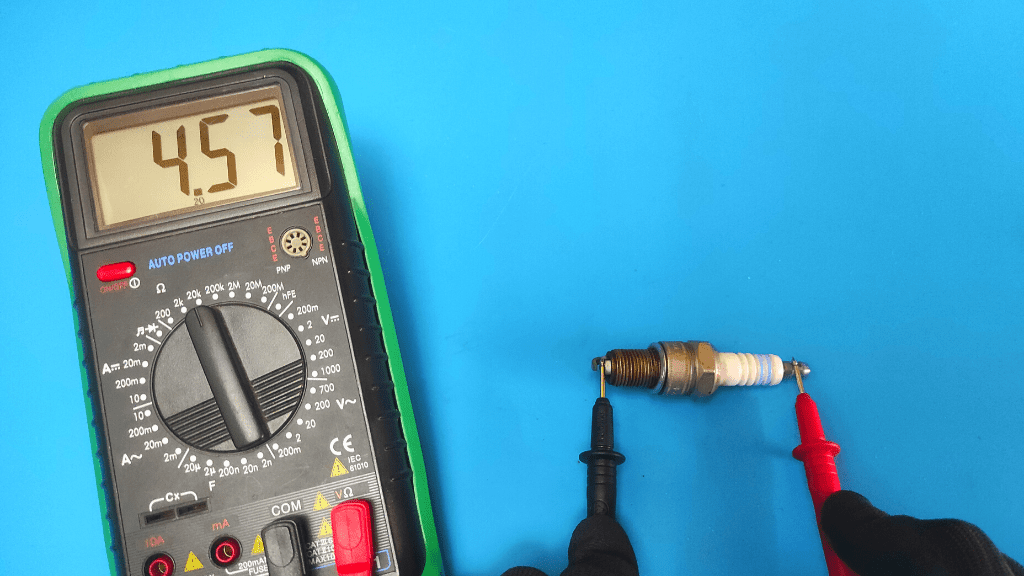
If you don't get the correct resistance value, then your spark plug is faulty. The malfunction may be that the thin internal electrode is loose, completely broken off, or there is a lot of dirt on the spark plug.
Clean the spark plug with fuel and an iron brush, then check it again.
If the multimeter still does not show an appropriate reading, then the spark plug has failed and should be replaced with a new one.
It's all about checking the spark plug with a multimeter.
You can also see this entire procedure in our video guide:
However, there is another way to check if it is good or not, although this test is not as specific as the multimeter test.
Checking the spark plug with Spark
You can tell if a spark plug is good simply by checking to see if it sparks when turned on and also by checking the color of the spark if it does.
A spark test will help you easily determine if the problem is with the spark plug or other parts of the ignition system.
Once the engine is dry, proceed to the next steps.
- Wear protective gear
The spark test assumes that you are dealing with a voltage pulse up to 45,000 volts.
This is very harmful to you, so you must wear rubber insulated gloves and goggles to prevent the danger of electric shock.


- Unscrew the spark plug from the cylinder head
Now you do not completely remove the spark plug from the engine. You just unscrew it from the cylinder head and leave it connected to the coil.
This is because it is needed to receive a voltage pulse from the coil to create a spark, and it is also needed outside the cylinder head to see the spark.
- Ground spark plug
Generally, when a spark plug is screwed into a cylinder head, it is usually grounded through a metal thread.
Now that you've removed it from the ground socket, you must provide it with another form of ground to complete the circuit.
Here you simply find the metal surface next to the spark plug connection. Don't worry, there are a lot of metal surfaces nearby.
You must also keep the connection away from any fuel source to avoid ignition.
- Start the engine and see the results
Turn the ignition key to the start position, as you would to start a car, and see if the spark plug sparks. If you see a spark, you check if it's blue, orange, or green.
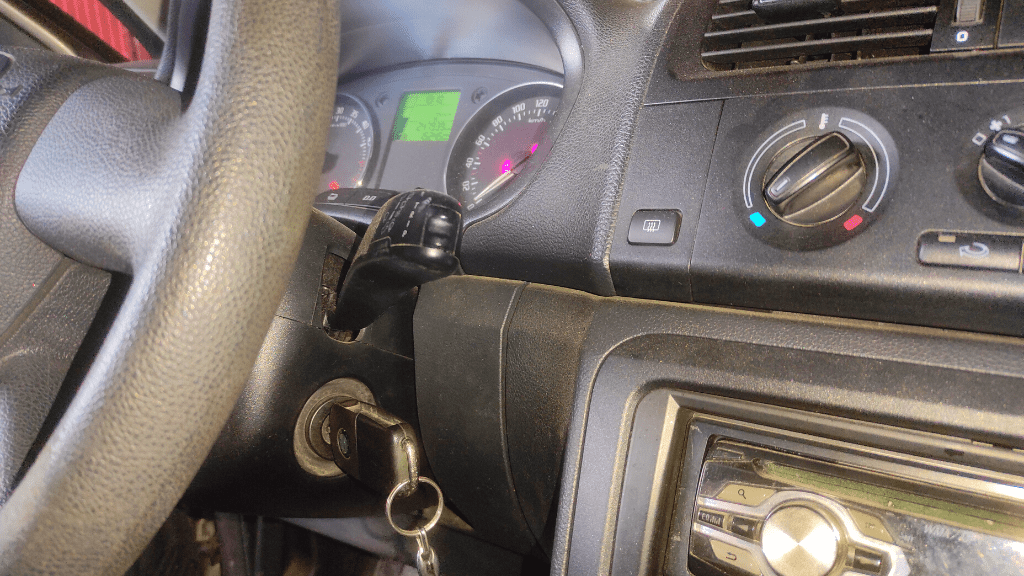

Blue sparks mean the spark plug is good and the problem may be with the cylinder head or other parts of the ignition system after the spark plug.
On the other hand, orange or green sparks mean that it is too weak to work in the ignition system and should be replaced. However, it is still not possible to write off.
You want to run a test with one you know works to determine the exact problem.
You remove the installed spark plug from the coil, replace it preferably with a new spark plug with the same parameters, try to start the engine and see if there is a spark.
If you get a spark from a new spark plug, you know the old spark plug is bad and should be replaced. However, if you do not have a spark, you understand that the problem may not be in the spark plug, but in other parts of the system.
Then you check the coil pack, look at the spark plug wire, check the starter, and diagnose other parts of the ignition system leading to the spark plug.
Conclusion
Diagnosing a spark plug is a fairly simple task that you can do at home without calling an auto mechanic.
If the spark plug seems to be working well, you move on to check other parts of the ignition system one by one to find the exact problem with your car.
F.A.Q.
How to understand that the spark plug is faulty?


If your car's spark plug has failed, you will experience symptoms such as unusual engine knocking, difficulty starting the car, increased fuel consumption, sudden loss of power, and misfiring.
How many ohms should a spark plug read?
A good spark plug has a resistance of 4,000 to 8,000 ohms if it has an internal resistor, or 1,000 to 2,000 ohms if it doesn't. A value outside of that means it's messed up.

